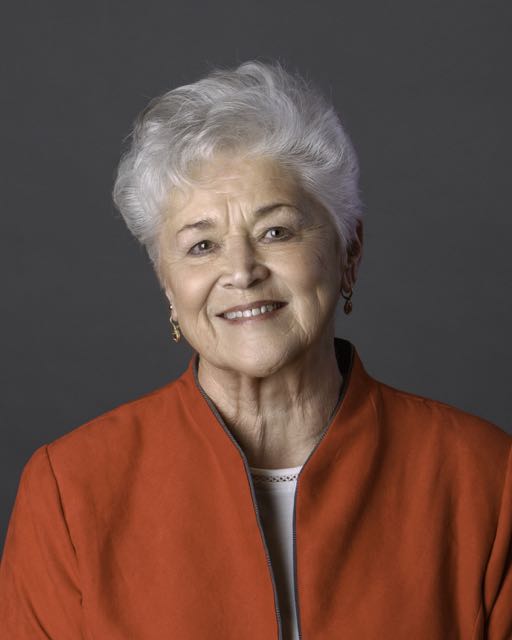History of Alaska Education Policy series: Origins of the Children’s Cabinet and Quality Schools Initiative

Shirley Holloway, former Commissioner, Alaska Department of Education, 1995-99, 2001-03
I’m genuinely grateful for this invitation to recall our most significant accomplishments during my time as Commissioner of Education and Early Development in the Knowles Administration. I read former Commissioner Lind’s article in the March issue of this newsletter, recalling my own memories of those profound and challenging times of change for Alaska and its children.
As I reflect on my own time as Commissioner, there are two things that stand out, and on which I look back with pride: the formation of the Children’s Cabinet, and the development and execution of the Quality Schools Initiative.
Recognized nationally as a governmental best practice, Children’s Cabinets focus on holistically addressing the well-being of children and families through collaborative governance. By bringing together disparate state agencies – which necessarily operate in virtual silos dictated by their individual missions – the Children’s Cabinet was able to mobilize resources and improve coordination to support Governor Knowles’ priorities for Alaska’s children.
Alaska’s first Children’s Cabinet was organized and convened by Governor Knowles in 1995, with Lieutenant Governor Fran Ulmer as its chair. Members were appointed from the top leadership of departments throughout state government: Education & Early Development, Community & Regional Affairs, Health & Social Services, Public Safety and Corrections, as well as the Budget Director.
Members of the Children’s Cabinet addressed the problems of Alaska’s youth and families with an attitude of “how can my department help?” This open approach, focused through a lens of children’s well-being, yielded improvements in both policy and practice statewide.
One of the most fruitful outcomes of the Children’s Cabinet was the allocation of state funding to facilitate initiatives in individual communities. Although the investment by the state was minimal, the outcomes for the 20 villages, towns, and cities throughout Alaska who participated was significant. Communities receiving grants through this program were empowered to gather local stakeholders and generate their own plans and programs in accordance with their unique goals for improving their children’s achievement, health, and ability to thrive. It’s particularly edifying to see that many of the programs seeded by these efforts still exist today.
Alaska’s Quality Schools Initiative (“QSI”) had its origins at Governor Knowles’ first Education Summit in October of 1996. It was my privilege to take part in that event, and at its conclusion, I pledged to develop and implement a results-based system of education for Alaska, one based on well-defined and achievable standards. This was the inception of QSI.
In coordination with national standards bodies like the Council for Basic Education, and in accordance with a law signed by Governor Knowles in June of 1998, Alaska’s Department of Education and Early Development (DEED) created reading, writing, and math standards for students ages 5-18, as well as implementing assessment instruments for use in 3rd, 6th, and 8th grade that would determine a student’s progress toward passing the recently legally mandated high school graduation exam.
These standards weren’t written by one person, or even one team. Instead, we were able to bring together representatives from universities, Native organizations, teacher organizations, and members of the varied and far-flung communities at large, all around Alaska. Together, we discussed and debated, wrote and re-wrote, and in the end, produced a set of standards that would help guide our students into the next century.
One more particularly memorable achievement was the way we approached the results of these standardized assessment tools, and how that impacted education at the classroom level. For years, assessment data had been looked at in the aggregate, by grade, by school, by district. But we knew, both from our own experience and from other supporting studies, that our students weren’t fitting neatly onto a bell curve. By disaggregating the data, we were able to identify segments of our student population who were critically underserved and desperately underachieving. This novel way of looking at achievement data was one of the major factors to underscore the need for differentiated learning, a movement and effort that continues to this day, both in Alaska and nationally.
Perhaps you’ve noticed that both of my examples take people from widely divergent constituencies and bring them together to achieve a common goal. In the trying times of the past year, with the distance between people becoming more pronounced and substantial, I would hope that these examples of collaboration, teamwork, and agreement upon a common goal can serve as a way forward as we face the ongoing challenges that seem both novel and all too familiar.
Shirley Holloway served as Commissioner of the Alaska Department of Education and Early Development from 1995-99, and 2001-03. She is currently an educational consultant and serves as President of the National Alliance on Mental Illness (NAMI) National, the largest grassroots mental health organization in the United States, and as Vice President and a member of the Board of Directors of NAMI Alaska.
More from the History of Education Policy series:
- Creating REAAs and Settling Molly Hootch – Marshall Lind, former Commissioner, Alaska Department of Education, 1971-1983, 1986-87
- Transitioning to a Standards-Based Education System – Jerry Covey, former Commissioner, Alaska Department of Education, 1991-95
- Collins Helped Create the School District He Served for 43 Years – An interview with Ray Collins of Iditarod Area School District
The History of Alaska Education Policy series seeks to provide historical context for Alaska’s current education policies from the perspectives of those who have helped to shape them.
The views expressed here are the writer’s and are not necessarily endorsed by the Association of Alaska School Boards. AASB welcomes diverse perspectives and civil discourse. To submit a Guest Column for consideration, see our Guest Column Guidelines.
